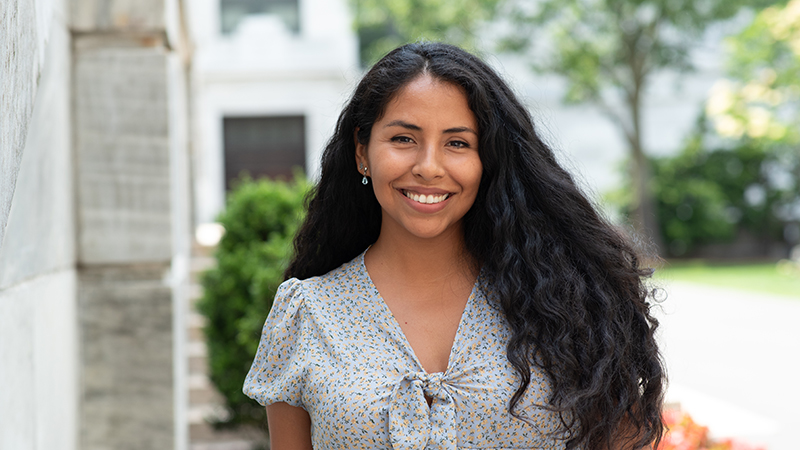I study how the brain makes sense of what we see, using artificial neural network and animal models. In both the brain and in vision neural networks, different areas can process different parts of visual scenes (one area processes edges, another colors, motion, etc.). In artificial neural networks, I study how these areas develop, learn and are robust to lesions, while in mouse and macaque models, I study how these areas interact and communicate with each other across different contexts.
Photo by Celia Muto
What are the big questions driving your research?
I’ve always been fascinated by how a random event that may not mean much to one person can be so powerful for another—in both a good way and a bad way. How is it that our brain is so uniquely connected to the outside world? Two people can be looking at a specific art piece for example, and one will cry while the other may even laugh. The aspect of “subjectiveness” in experiencing the same stimulus is a very intriguing concept, that I believe is influenced by the way that different brain areas communicate with each other.
Even more interesting, one’s feelings towards a visual experience are not permanent. Looking at a bee from the inside of my home as it pollinates a flower is a beautiful thing for me. Remove the glass separating us both, and the bee goes from being a majestic creature, to a stinging predator. The only thing that changed in the environment was the existence of glass in a window. Within a second that can cause a massive change in subjective experience. What is this role of context in the brain, and how is it regulated?
Also, being in the midst of the AI boom, I’m curious about the similarities between biological and artificial intelligence in vision. Do bots look at things like us? Are the same features that are important to us (color, shape, etc.) important to them? If we were to give them the ability to “feel emotion”, would they attribute the same feelings to the same visual concepts as humans?
What drew you to this area of neuroscience?
Before joining the lab of Gabriel Kreiman, I was obsessed with inhibitory neurons—neurons whose primary role is to silence other neurons. I really wanted to know their different roles in cortical circuits. I remember telling my undergrad PI that I wanted to know exactly how all these neurons are connected to all other neurons. And not only how they are connected, but also where their synaptic connections are within the neuron, how many synapses there are per neuron to neuron connection, etc.
During grad school interviews, I learned about connectomics—which essentially studies this very question! I rotated in Gabriel’s lab because he was interested in this field, although he was very new to it. He explained how I can perform mini connectomic experiments in artificial neural networks, but without the years of data collection. I decided to study these circuits in the context of visual neuroscience—which I fell in love with after learning more about computer and animal vision from Gabriel, as well as Marge Livingstone and Carlos Ponce (faculty in the neurobiology department at Harvard Medical School).
What is the first experiment you remember doing?
My first neuroscience research experience was training rats to do an odor memory sequence task to look at attention mechanisms in episodic memory. I remember how scared I was of the rats, even after learning about how to handle them and perform the training paradigm. My first day doing the training, I remember the little rats shaking due to my own shaking hands. They were such champs, remaining relaxed even though I was freaking out. The highlight of that experience was watching them eat their treats at the end of training.
What is an emerging area of science that you are excited about? Where you see potential for big discoveries in the next decade?
I’m very excited to find out how the interdisciplinary field of “NeuroAI”—which includes using AI to study the brain and using neuroscience to optimize the design of AI—plays out. The line between artificial and biological intelligence is getting more and more blurry. We can test the limits of this boundary, to learn more about our behavior and how it separates us from machines. For the aspects where we are alike, using AI as a proxy for biological intelligence could aid us in probing our understanding of brain function and behavior.
What are your hobbies outside of the lab—current, past, or future?
Traveling has been my favorite hobby for years now. I worked for the airline industry before grad school—which gave me lots of opportunities to fly to different countries. I decided one day to meet this goal: To travel to one country of every letter of the alphabet. I’m happy to say I only have one letter left (Y-but I cannot do Yemen at the moment, with the current travel restrictions). Also, I’m hoping to hit my 50th country this year!

